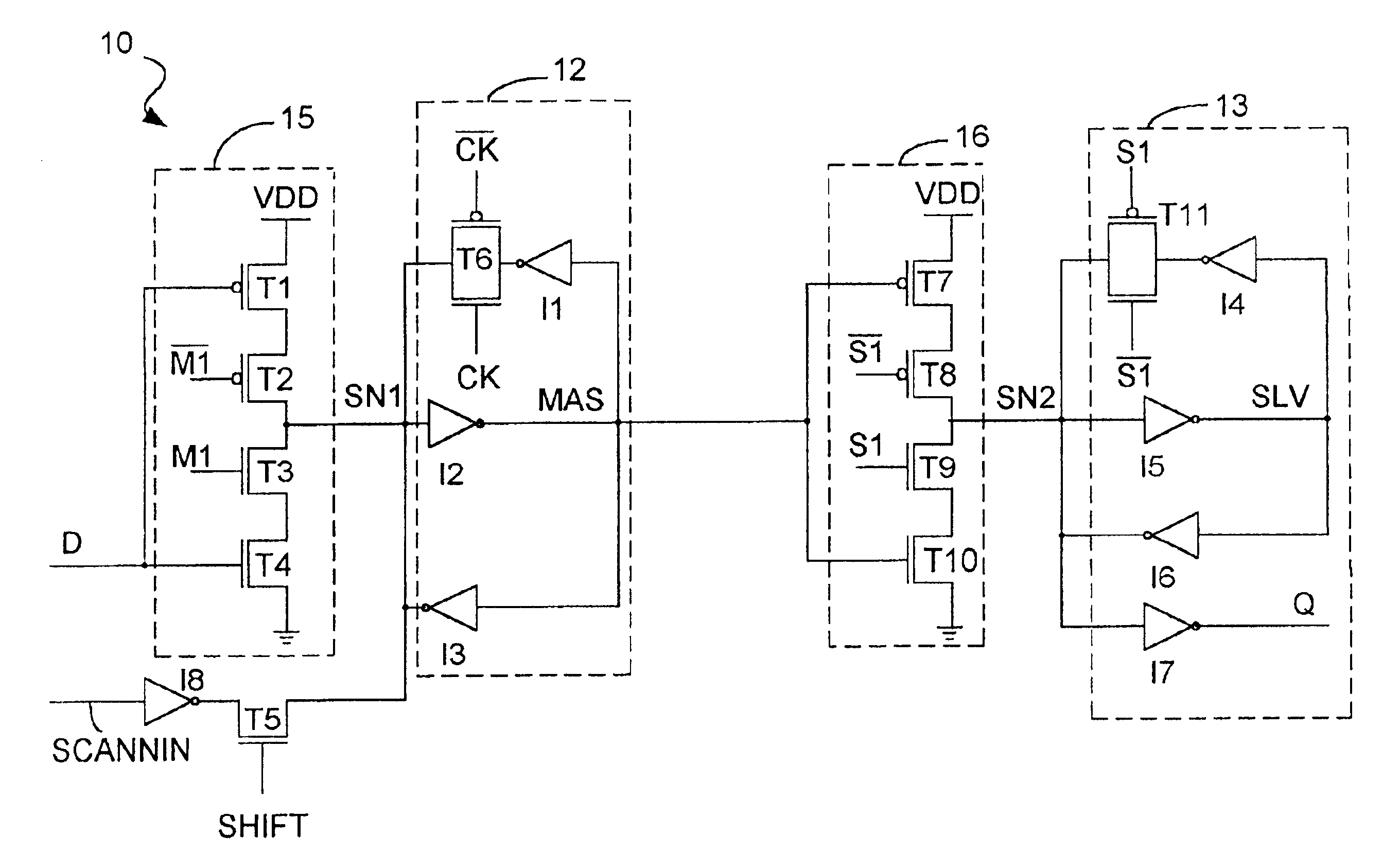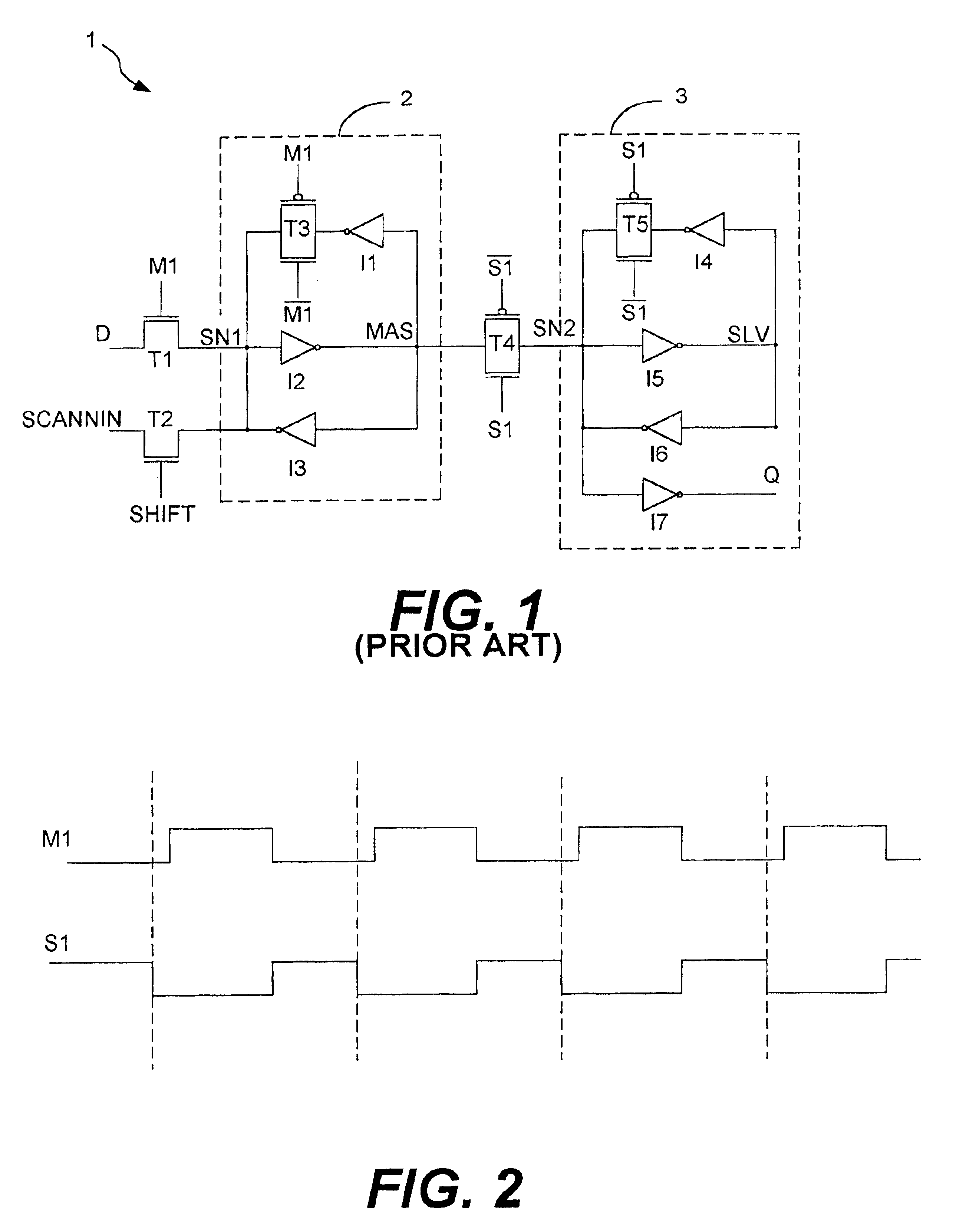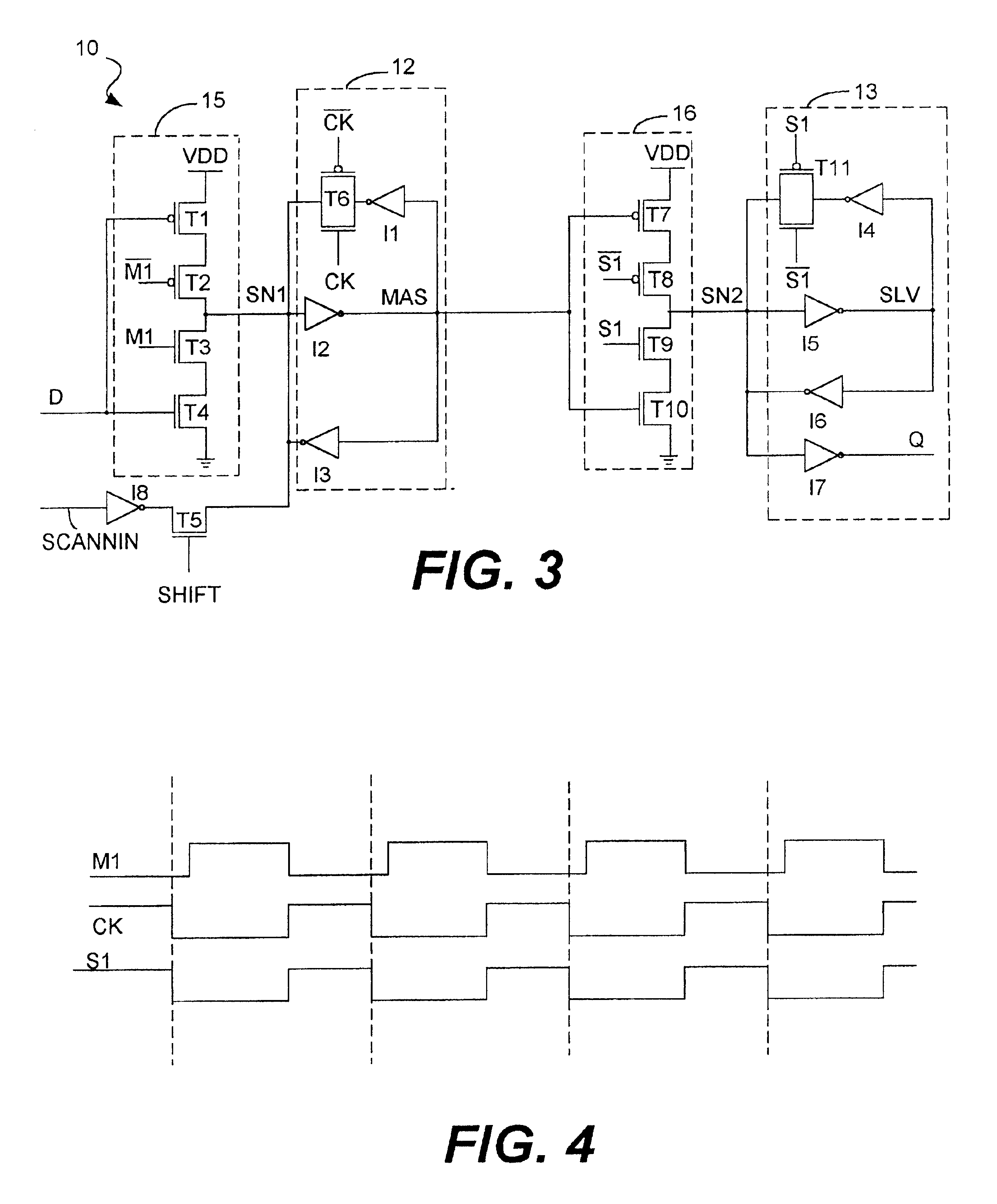Scannable synchronizer having a deceased resolving time
a synchronizer and dead technology, applied in the field of synchronizers, can solve the problems of limiting the speed of the master latch, and providing no gain to the signals, so as to reduce the resolving time associated with the master latch, reduce the possibility, and reduce the transition time of the input data signal
- Summary
- Abstract
- Description
- Claims
- Application Information
AI Technical Summary
Benefits of technology
Problems solved by technology
Method used
Image
Examples
Embodiment Construction
[0024]FIG. 3 is a schematic diagram of the synchronizer 10 of the present invention in accordance with the preferred embodiment. The synchronizer 10 comprises a master latch 12 and a slave latch 13. The master and slave latches 12 and 13 operate in a manner that is substantially identical to the manner in which the master and slave latches 2 and 3, respectively, shown in FIG. 1 operate. However, the synchronizer 10 of the present invention utilizes an input stage 15 to the master latch 12 and an input stage 16 to the slave latch 13 that are clocked inverters that facilitate the resolving processes performed by the master and slave latches 12 and 13, as described below in more detail. Therefore, the input stages 15 and 16 improve the resolving time of the synchronizer 10 and minimize the likelihood that a synchronizer failure will occur.
[0025]Another difference between the synchronizer 10 of the present invention and the synchronizer 1 shown in FIG. 1 is that the gate T6 is not contr...
PUM
 Login to View More
Login to View More Abstract
Description
Claims
Application Information
 Login to View More
Login to View More - R&D
- Intellectual Property
- Life Sciences
- Materials
- Tech Scout
- Unparalleled Data Quality
- Higher Quality Content
- 60% Fewer Hallucinations
Browse by: Latest US Patents, China's latest patents, Technical Efficacy Thesaurus, Application Domain, Technology Topic, Popular Technical Reports.
© 2025 PatSnap. All rights reserved.Legal|Privacy policy|Modern Slavery Act Transparency Statement|Sitemap|About US| Contact US: help@patsnap.com



